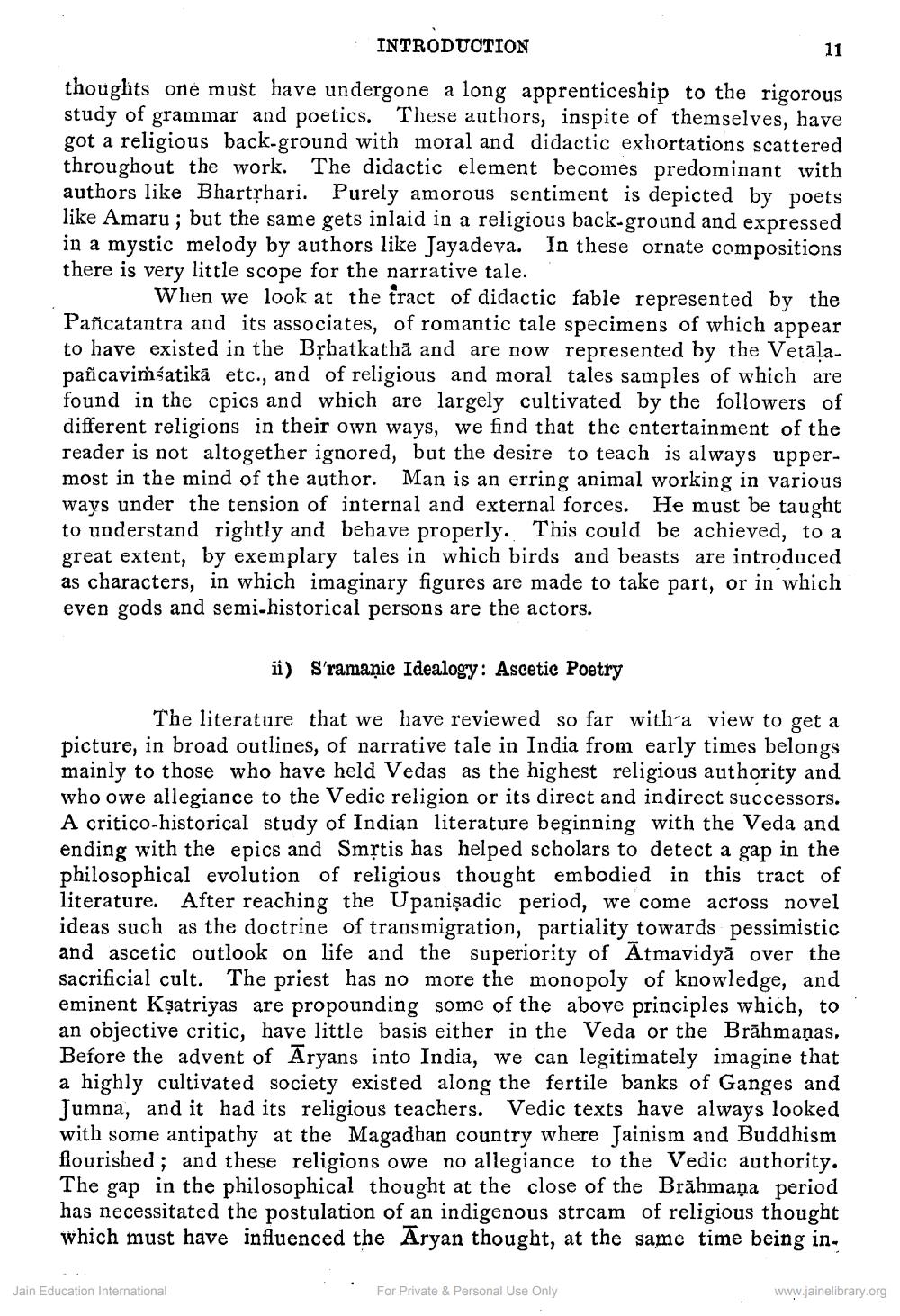________________
INTRODUCTION
11
thoughts one must have undergone a long apprenticeship to the rigorous study of grammar and poetics. These authors, inspite of themselves, have got a religious back-ground with moral and didactic exhortations scattered throughout the work. The didactic element becomes predominant with authors like Bhartrhari. Purely amorous sentiment is depicted by poets like Amaru; but the same gets inlaid in a religious back-ground and expressed in a mystic melody by authors like Jayadeva. In these ornate compositions there is very little scope for the narrative tale.
When we look at the tract of didactic fable represented by the Pañcatantra and its associates, of romantic tale specimens of which appear to have existed in the Bșhatkathā and are now represented by the Vetāla. pañcaviṁsatikā etc., and of religious and moral tales samples of which are found in the epics and which are largely cultivated by the followers of different religions in their own ways, we find that the entertainment of the reader is not altogether ignored, but the desire to teach is always uppermost in the mind of the author. Man is an erring animal working in various ways under the tension of internal and external forces. He must be taught to understand rightly and behave properly. This could be achieved, to a great extent, by exemplary tales in which birds and beasts are introduced s characters, in which imaginary figures are made to take part, or in which even gods and semi-historical persons are the actors.
ii) S'ramanic Idealogy: Ascetic Poetry
The literature that we have reviewed so far with a view to get a picture, in broad outlines, of narrative tale in India from early times belongs mainly to those who have held Vedas as the highest religious authority and who owe allegiance to the Vedic religion or its direct and indirect successors. A critico-historical study of Indian literature beginning with the Veda and ending with the epics and Smộtis has helped scholars to detect a gap in the philosophical evolution of religious thought embodied in this tract of literature. After reaching the Upanișadic period, we come across novel ideas such as the doctrine of transmigration, partiality towards pessimistic and ascetic outlook on life and the superiority of Atmavidyā over the sacrificial cult. The priest has no more the monopoly of knowledge, and eminent Kşatriyas are propounding some of the above principles which, to an objective critic, have little basis either in the Veda or the Brāhmaṇas, Before the advent of Aryans into India, we can legitimately imagine that a highly cultivated society existed along the fertile banks of Ganges and Jumna, and it had its religious teachers. Vedic texts have always looked with some antipathy at the Magadhan country where Jainism and Buddhism flourished; and these religions owe no allegiance to the Vedic authority. The gap in the philosophical thought at the close of the Brāhmaṇa period has necessitated the postulation of an indigenous stream of religious thought which must have influenced the Aryan thought, at the same time being in,
Jain Education International
For Private & Personal Use Only
www.jainelibrary.org




